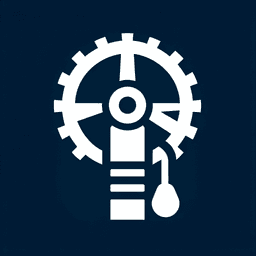
Manual Windlass: Definition, Uses, and Examples
January 16, 2025
Manual Windlass
A manual windlass is a mechanical device used on ships and boats to hoist anchors and other heavy weights. It operates through manual power, typically using a hand crank or lever system, making it an essential tool for sailors and maritime users who may not have access to electrical power or prefer a more traditional approach.
Components:
- Drum: The central part of the windlass where the anchor chain or rope is wound.
- Brake: A mechanism that controls the release of the anchor, ensuring it can be lowered smoothly and safely.
- Hand Crank: A lever used to manually turn the drum, allowing the user to raise or lower the anchor.
- Pawl and Ratchet: These components prevent the drum from spinning backward, ensuring the anchor remains secure when hoisted.
Usage:
Manual windlasses are particularly useful on smaller vessels where space and power supply are limited. They provide a reliable means of anchor management, especially in remote areas or during power outages. The manual operation allows for precise control over the speed and direction of the anchor's movement.
Advantages:
- Independence from electrical systems, reducing the risk of failure due to power loss.
- Cost-effective compared to electric windlasses.
- Simple maintenance and repair, often requiring only basic tools and skills.
Considerations:
While manual windlasses are robust and reliable, they require physical effort to operate, which may be challenging in adverse weather conditions or for individuals with limited strength. It is important for users to be familiar with the operation and maintenance of the windlass to ensure safety and efficiency.
Manual Windlass: A Comprehensive Guide for Maritime Users
A manual windlass is a crucial tool for maritime operations, particularly for those who prefer or require non-electric solutions. It is a hand-operated device used to hoist anchors and other heavy objects on ships and boats.
How Does a Manual Windlass Work?
The manual windlass operates through a hand-cranked mechanism. It consists of a drum or gypsy, around which the anchor chain or rope is wound. By turning the handle, the user can lift or lower the anchor, providing precise control over its movement. This process, while requiring physical effort, is straightforward and reliable.
Benefits of Using a Manual Windlass
- Reliability: Manual windlasses do not rely on electrical power, making them dependable in situations where power may be unavailable.
- Cost-Effective: They are generally more affordable than electric windlasses, both in terms of initial purchase and maintenance.
- Durability: With fewer moving parts, manual windlasses are often more durable and easier to repair.
Considerations for Maritime Users
When selecting a manual windlass, consider the size and weight of your anchor, the type of vessel, and the typical conditions you encounter. Ensure compatibility with your anchor chain or rope for optimal performance.
Frequently Asked Questions
What are the two main types of windlass?
There are two primary types of windlasses: horizontal and vertical. A horizontal windlass has a main shaft that runs horizontally, while a vertical windlass has a shaft mounted vertically. Each type has its own advantages and disadvantages, depending on the specific needs of the vessel.
What is a windlass in nautical terms?
In nautical terms, a windlass is a machine that restrains and manipulates the anchor chain on a boat, allowing the anchor to be raised and lowered by means of chain cable. It is an essential component for managing anchor operations efficiently.
How do I maintain a manual windlass?
Regular maintenance of a manual windlass includes cleaning to remove salt and debris, lubricating moving parts, and inspecting for wear and tear. Proper maintenance ensures longevity and reliable performance.




